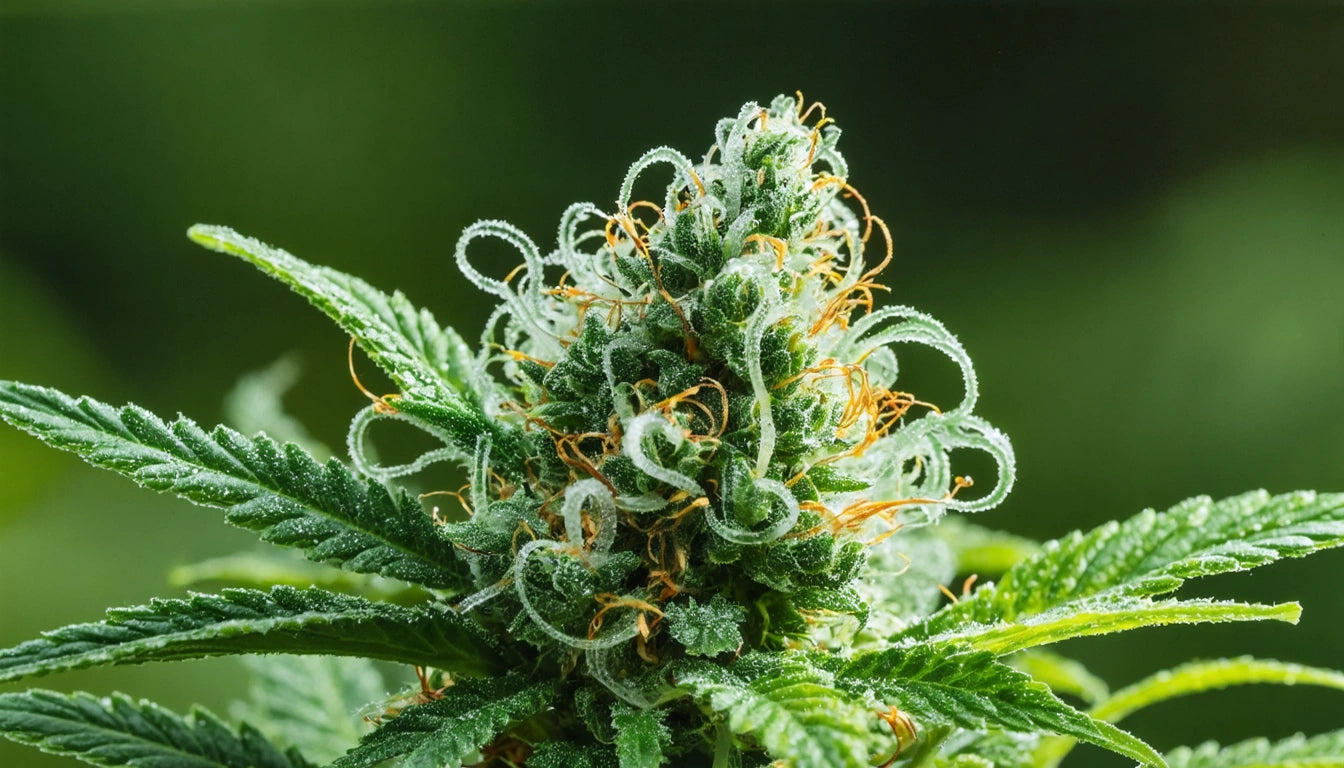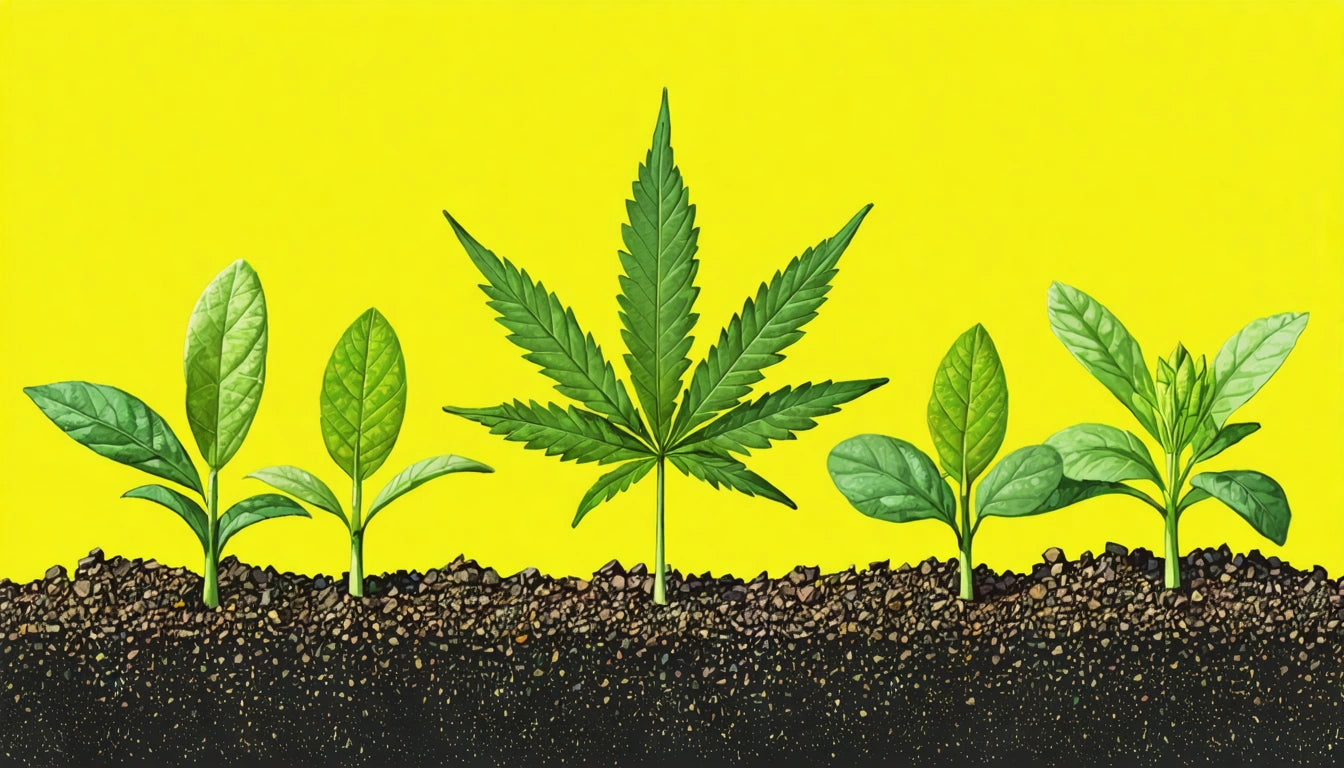Understanding Trichomes: The Key to Harvesting Cannabis at the Right Time
Knowing when to harvest cannabis is perhaps the most crucial decision growers make. Too early, and potency suffers; too late, and desirable compounds degrade. The secret to perfect timing lies in understanding trichomes on weed when ready to harvest. These tiny resin glands hold the key to cannabinoid production and can tell you exactly when your plants have reached peak potency.
What Are Cannabis Trichomes?
Trichomes are microscopic mushroom-shaped glands that appear on cannabis flowers and surrounding leaves. These crystalline structures contain the highest concentration of cannabinoids (THC, CBD) and terpenes that give cannabis its effects and flavors. According to this detailed guide on trichome identification, these structures serve as the plant's natural defense mechanism against pests, environmental stressors, and UV radiation.
Three main types of trichomes appear on cannabis plants:
- Bulbous trichomes: Tiny, barely visible without magnification
- Capitate-sessile trichomes: Slightly larger with a small stalk
- Capitate-stalked trichomes: Largest type with a mushroom-like head, containing the highest concentration of cannabinoids
Trichome Color Changes During Maturation
The most reliable indicator for harvest timing is trichome color. As cannabis plants mature, trichomes undergo a predictable color transformation that signals changes in cannabinoid production.
Clear Trichomes (Not Ready)
When trichomes first develop, they appear clear or translucent. At this stage, THC production is still underway, and harvesting would result in less potent cannabis with potential "green" flavors. Research on trichome colors indicates that clear trichomes typically contain less than 50% of their potential cannabinoid content.
Cloudy/Milky Trichomes (Peak THC)
As plants mature, trichomes become cloudy or milky white. This opacity signals that THC production has peaked, making it the ideal harvest time for maximum psychoactive effects. When trichomes when ready to harvest show this milky appearance, they typically contain the highest concentration of THC.
Amber Trichomes (CBD Increasing, THC Degrading)
With further maturation, trichomes turn amber or golden. This color change indicates THC is beginning to degrade into CBN, a cannabinoid with more sedative and less psychoactive effects. For balanced effects, many growers harvest when 20-30% of trichomes have turned amber.
How to Inspect Trichomes for Harvest Readiness
Proper trichome inspection requires magnification. The naked eye cannot accurately assess trichome development. This harvesting guide recommends these tools:
- Jeweler's loupe: 30-60x magnification, portable and affordable
- Digital microscope: Higher magnification with image capture capabilities
- Smartphone attachments: Clip-on macro lenses for convenient inspection
When examining trichomes, check multiple locations on different buds, as maturation can vary throughout the plant. Top colas typically mature faster than lower buds, which may influence your harvesting strategy.
Optimal Harvesting Windows Based on Trichomes
Different effects require different harvesting times. According to this potency optimization guide, trichome when to harvest percentage varies based on desired outcomes:
For Maximum THC and Energetic Effects
Harvest when 70-90% of trichomes are cloudy, and 0-10% have turned amber. This timing maximizes THC content and produces more cerebral, energetic effects ideal for daytime use.
For Balanced Effects
Harvest when 50-70% of trichomes are cloudy and 20-30% have turned amber. This balance provides both psychoactive effects and relaxation.
For More Sedative Effects
Harvest when 30-50% of trichomes are cloudy and 50-70% have turned amber. The higher CBN content from degraded THC produces more body-focused, sedative effects ideal for sleep aid or pain relief.
Once harvested, proper storage becomes essential. Using appropriate storage containers with child-resistant lids not only maintains compliance with safety regulations but also helps preserve trichome integrity and potency over time.
Factors Affecting Trichome Development
Several environmental factors influence trichome production and maturation:
- Light intensity: Higher UV exposure typically increases trichome production as the plant produces more resin to protect against radiation
- Temperature: Slightly cooler temperatures during flowering can enhance trichome development
- Humidity: Lower humidity (40-50%) during late flowering can increase resin production
- Genetics: Some strains naturally produce more trichomes than others
Contrary to some beliefs, research shows that trichomes do not continue to mature after harvest. The curing process preserves and slightly alters existing compounds but does not create new ones or continue trichome development.
Maximizing Trichome Production for Better Harvests
For growers looking to increase trichome production, several proven techniques can enhance resin development:
- Strategic stress: Mild, controlled stress through techniques like leaf tucking or low-stress training can boost trichome production
- Light spectrum manipulation: Increasing UV-B exposure during late flowering can stimulate trichome development as a protective response
- Temperature fluctuation: Creating a temperature difference between day and night (around 10-15 °F) can enhance resin production
- Proper nutrient timing: Reducing nitrogen and increasing phosphorus and potassium during flowering supports trichome development
Comprehensive harvesting guides suggest that patience is perhaps the most important factor. Many novice growers harvest too early, missing the peak window for trichome development.
Understanding when to harvest weed trichomes is both an art and a science. By closely monitoring trichome development and color changes, growers can precisely target their desired effects and maximize the quality of their harvest. Whether aiming for energetic, balanced, or sedative effects, the trichomes provide the roadmap to success.











Leave a comment
All comments are moderated before being published.
This site is protected by hCaptcha and the hCaptcha Privacy Policy and Terms of Service apply.